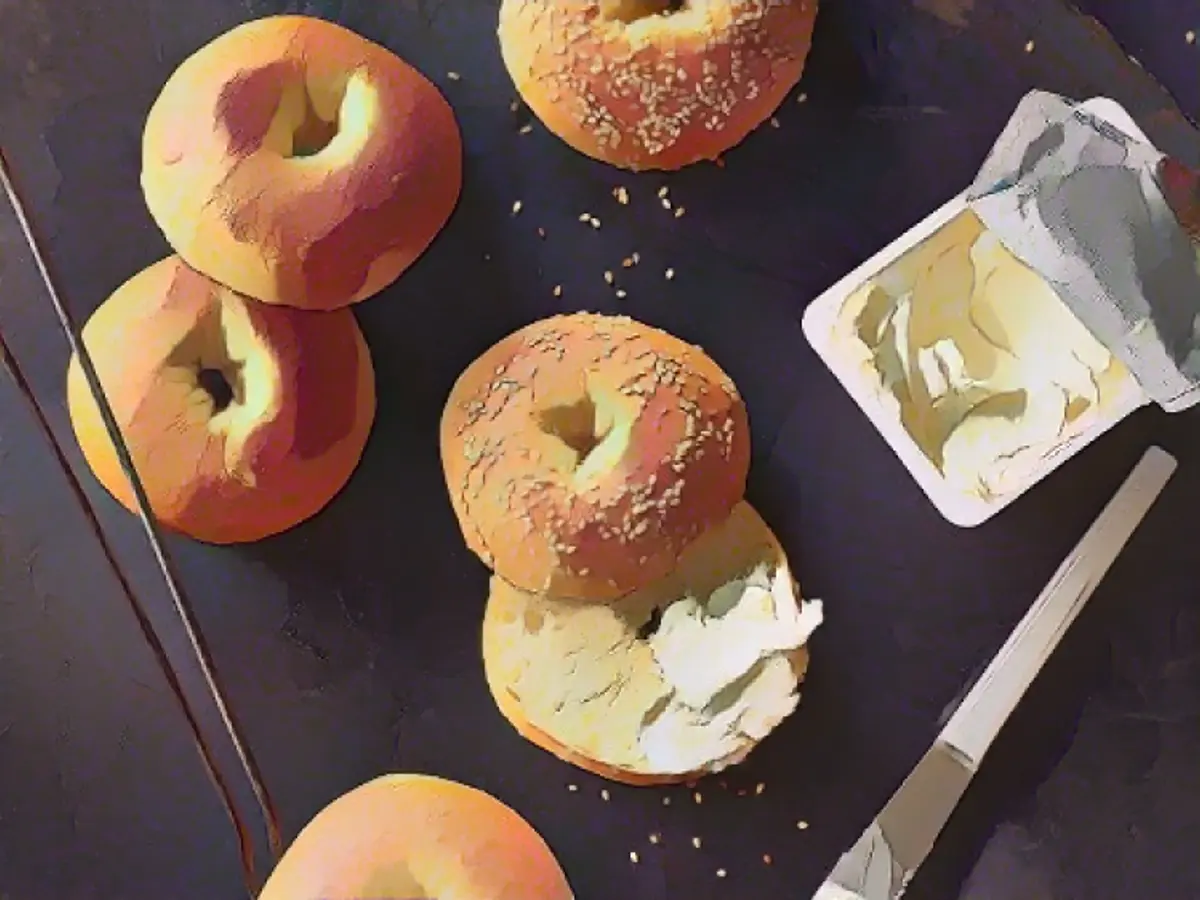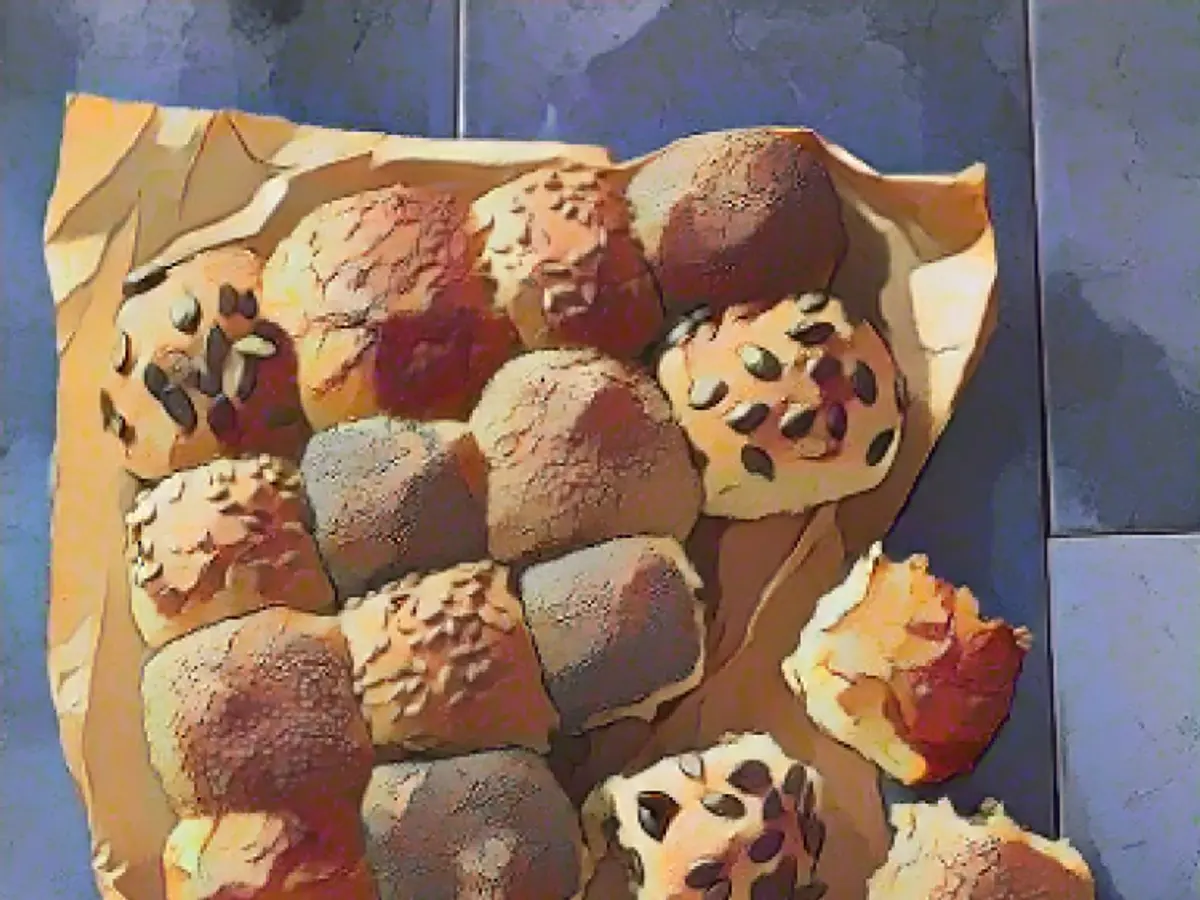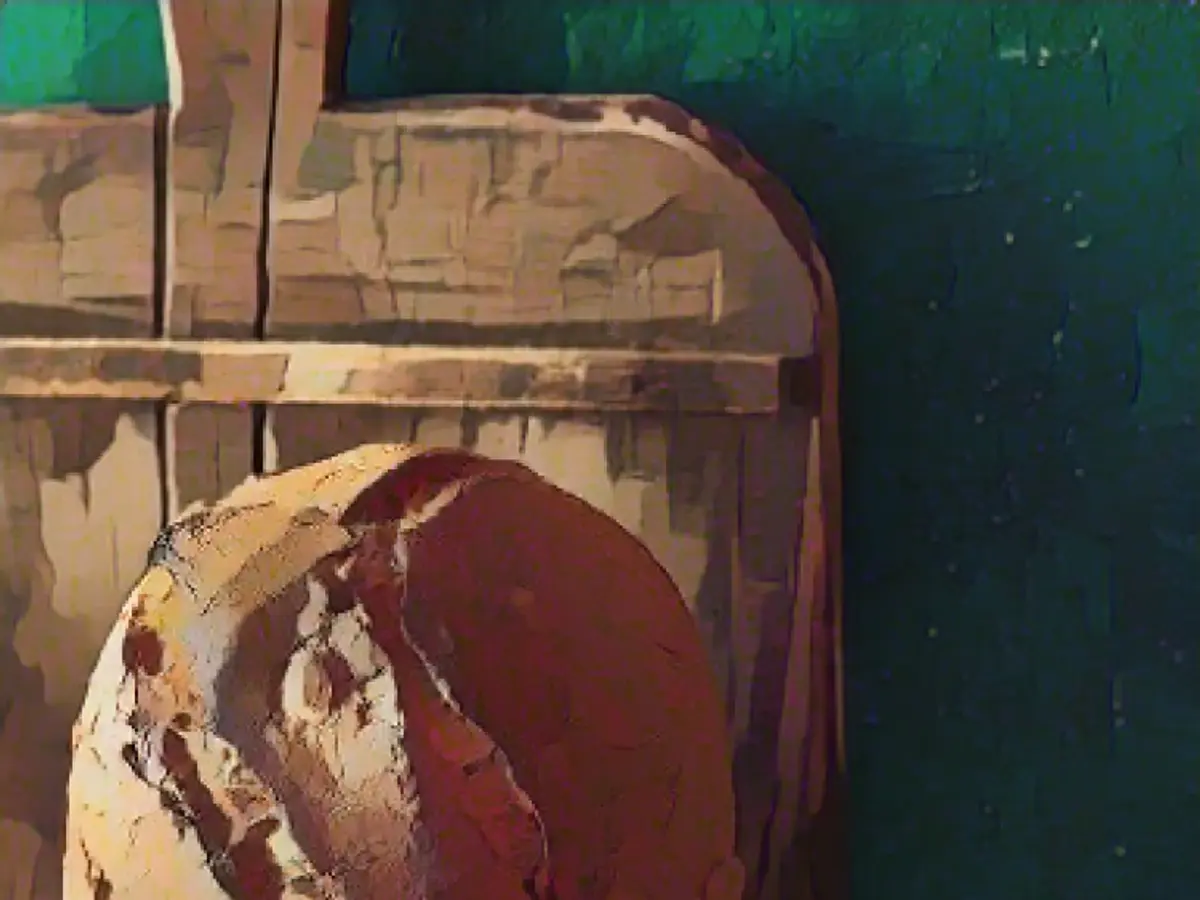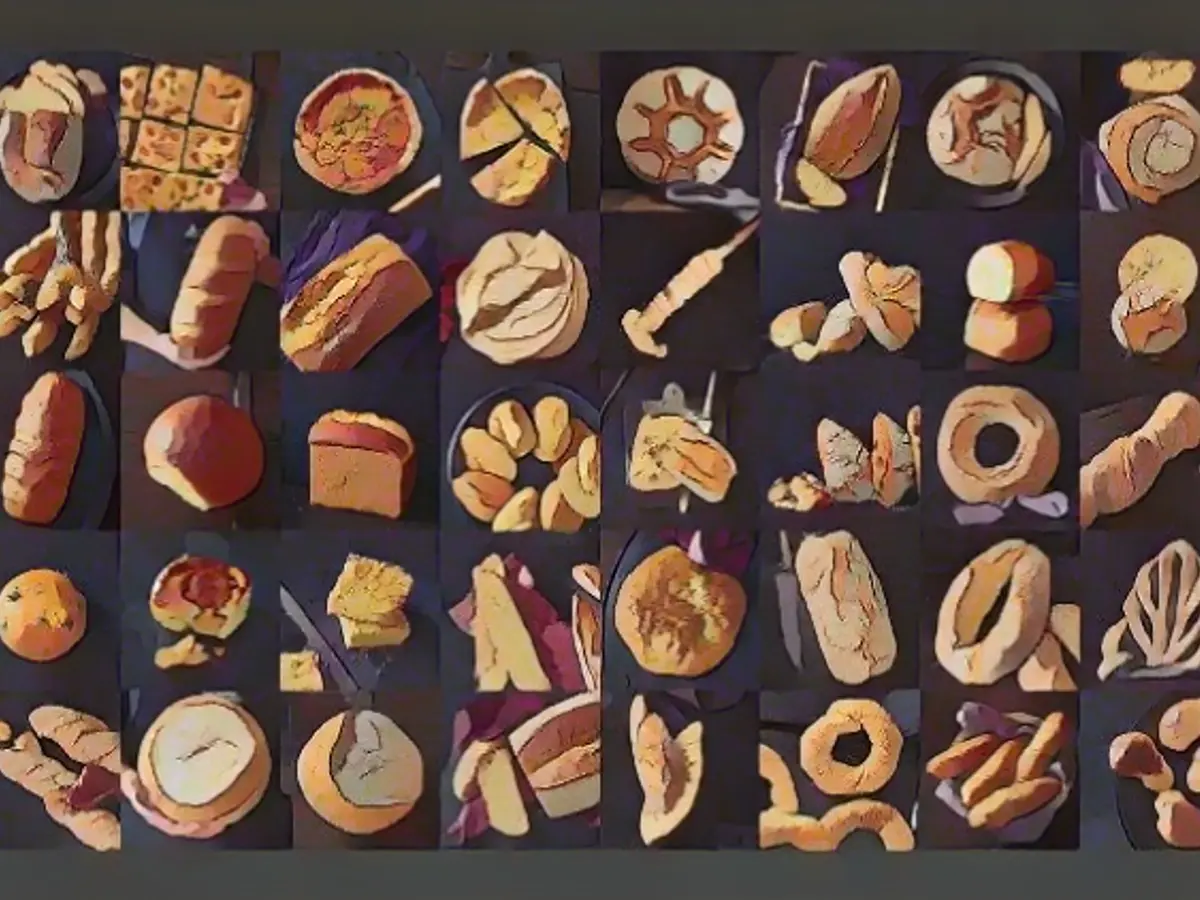Homemade bread - the path to happiness
Two men, one mission: delicious bread for everyone! One is an experienced "bread pope", the other a trendy "bread fluencer". There is no contradiction between Lutz Geißler and Jo Semola. Whichever you choose, you can't go wrong.
Being able to buy good tasting and wholesome bread is like winning the lottery: a matter of luck. I hear there are people who have their favorite baker nearby who has exactly that in his store: delicious bread. I don't have one; in central Berlin, supermarket chains and bakery outlets dominate the bread market. In 2016, when I held my first bread baking book by Lutz Geißler in my hands, I joined the ranks of DIY bread bakers.
The results I achieved right away had nothing to do with my previous "Ohne Geißler" baked goods, which were all too demanding on the chewing bars: too hard, too dry. Despite my best efforts, the steaming in my zero-eight-fifteen stove usually didn't work properly. Thanks to Geißler's easy-to-understand instructions and the step-by-step photos, I was able to perform at my best and successfully tackle the sourdough. As always in life, at some point that's exactly what happened - life intervened: The sourdough went on vacation, the scales showed irritating numbers, corona frustration and a bad mood. I had lost my inner peace.
If you have ever baked bread according to Geissler, you will understand me: There's something sensual and calming about mixing the dough in the bowl - not even the sticky fingers get in the way. Without the hustle and bustle and stress, something completely new is created overnight from the sludge, which is baked the next day and fills the kitchen with the fresh smell of bread. All without any sweaty work! So it's time to get going again, especially as I have two new and fantastic bread baking books from Becker Joest Volk Verlag: Geißler's "Die neue Brotbackformel" and "Wake & Bake" by Jo Semola. Hubertus Schüler once again provides the impressive food photography in both books.
Lutz Geißler: The new bread baking formula
I'm a total Geißler bread baking fan, so it's not easy for other authors to get in between. No one explains the basics and subtleties of bread baking as clearly and memorably as Geißler. His books are well structured, logically laid out, clear, precise and without distracting bells and whistles. Like good bread: simple and honest. With 17 books to date, almost all of them bestsellers, and over 600,000 copies sold, Geißler is the most successful author of bread baking books in the German-speaking world and has won several awards. His "Plötzblog" is visited by more than 100,000 people every month. You could be forgiven for thinking that Geißler has told you everything you need to know about baking bread.
But with his new bread baking formula, Geißler ensures that bread baking is geared towards you - and no longer the other way around. Even the complete bread supply for an entire family is now possible without stress and from home. This ensures that you always have fresh, healthy, varied and also very affordable bread. Preparing the recipes described in detail is simple: you choose the type(s) of flour, mix the ingredients roughly by hand to make a yeast dough and put it in the fridge. Within the next 24 to 72 hours, if there is time, the dough can be taken out of the fridge, shaped and baked.
There are breads with one, two and three days maturing time, even some that don't care about the maturing time, as they have one to three days maturing time. The time window is therefore large and flexible. You can get 50 delicious and very different baking results from a single basic dough. The best thing is that you can even decide which bread you want just before baking. Whether plain white bread, French baguette, wholemeal bread, tarte flambée, pizza or toast, whether rolls, olive bread, ciabatta or stick bread: the recipe index ranges from spelt bread to yufka.

You determine which basic dough you work with by selecting the types of flour: A with wheat flour, B with wheat and rye flour, C with spelt flour and D with wholemeal wheat flour. The steps are always the same: Weighing, mixing, covering, maturing in the fridge (stretching and folding after one hour and after about 12 hours), shaping, maturing at room temperature - and finally baking. The pure preparation time is less than 20 minutes. The rest of the time the bread dough works on its own, developing flavor and wholesomeness without you having to do anything about it yourself. The use of yeast is minimal in all recipes. Some recipes have additional ingredients such as nuts, fruit or olives; there is information on how to customize the recipes, which are easy to implement.
"The new bread baking formula" is a comprehensive standard work for beginners, you can get started straight away. The only requirement: Reading through the introductory section of the book at your leisure to gain the necessary understanding. The basic equipment and accessories are straightforward. A bowl and a stove are enough to get you started. I also bought a dough card, fine scales and proofing basket later on. However, measuring the tiny amounts of yeast was very easy with my first Geissler because it has pre-drawn circles for the yeast balls and I had a cast-iron pot right from the start. It's over 30 years old and has now been given a new lease of life because I can't imagine baking bread without it. In the meantime, I also bought a loaf pan.
Technical terms are briefly explained and there are overviews/tables on baking methods, accessories, yeasts, flours and calculations. Sourdough as a leavening agent is not an issue here. Baking with sourdough is more complex and, according to Geißler, "may be reserved for a second part of the book project". Geißler has obviously not written everything there is to know about baking bread.
What does quick bread mean here?

This year, Geißler has two books nominated for the German Cookbook Prize: "Die neue Brotbackformel" and "Auf der Suche nach gutem Brot" (together with his partner Christina Weiß). Jo Semola is also nominated with "Wake & Bake", which has the subtitle "Baking bread and rolls quickly and easily". Tempting - isn't it? However, "quick breads" make the "bread pope" Geißler shake his head. And yet this is not a contradiction, because Geißler and Semola are in absolute agreement: "Quick" must never be at the expense of dough maturity, because that would mean bad-tasting and poorly digestible bread in the end. For both authors, "quick" has a new meaning for bread quality: hardly any work with the dough.
Jo Semola: Wake & Bake
Jo Semola is a shooting star in the bread baking world and is shaking up the scene with great success. With the sentence "Hi, I'm Jo and I bake bread" at the beginning of his baking videos, Semola has achieved cult status. Every day, he convinces around 300,000 people on TikTok, Instagram and YouTube that baking good bread is not complicated and that you can enjoy home-baked bread, rolls, croissants and the like for breakfast without any baking stress. Quickly prepared in the evening, the yeast or sourdough works overnight in the fridge without any help from us and only needs to go into the oven briefly the next morning - and then the smell of freshly baked bread wafts into your nose and you're set for the whole day. Consequently, Semola's book is also called "Wake & Bake". In 60 recipes, he offers a wide range of variations for every taste and thus brings a lot of variety, for example in the lunchbox.

Semola's way of baking also gives the baked goods a remarkable intensity of flavor thanks to the longer overnight resting of the dough, they are much more digestible thanks to the mini use of yeast and stay fresh for longer than the products that are usually produced quickly in industrial bakeries. And all this with the greatest possible relaxation. Semola knows how important this is: After a burnout in 2019, he left his job as an event technician, found relaxation in handling bread dough and ultimately found his calling. His wife, actress and influencer Sarah Kim Gries, obviously also played a significant role in the naming of the company and his passion for baking. Just this much can be revealed: the Italians call semola a particularly finely ground durum wheat semolina. And Sarah only wanted to emigrate to California with Johannes if she could get good bread to eat there. So: it's up to the man! Semola shared his "self-experiments" on social media and the more successful he became, the bigger his fan base grew. His plans to emigrate are on hold for now - how lucky for us!
From yeast to sourdough - it's all here

"Wake & Bake" contains a detailed theoretical section with all the important information on flour types and quality, accessories, dough resting and overnight proofing, dough processing, baking in a pot or free-standing, steam and temperatures, yeast and sourdough, storing and freezing bread. Semola gives tips on what to consider when switching to wholemeal flour and what to bear in mind when making a leavening solution for lye baked goods. Semola has put together a quick start guide for those of you in a hurry. But I think it's worth reading in detail here too. After all, it hasn't made anyone any dumber. If you prefer to have the steps explained by video, you're in good hands here: All the recipes have a QR code for a collection of videos explaining basic and recurring techniques.
The recipes cover a considerable range in five chapters: Yeast, sourdough, cookies, Danish pastries and sweet pastries. They range from simple yeast house bread to butter plait and garlic-feta baguette to classic sourdough rye mixed bread. The author explains the necessary steps for newcomers to sourdough. And how do you measure the small quantities of yeast without a fine scale? Semola: "1 g of fresh yeast is roughly the size of a pea. 0.1 g of fresh yeast is roughly the size of a grain of pepper or rice." Now let's get baking!
Geissler's Camembert bread
One of the few breads that you should eat warm so that the Camembert is still liquid. The recipe is designed for three small loaves. Please note that the Camembert should be taken out of the fridge about 1 hour before shaping so that it does not cool the dough from the inside. The riper the Camembert, the more intense the flavor and the softer the melt. To add even more flavor in combination with the cheese, you could mix fresh rosemary or other herbs into the dough.
Preparation:
Preparation day on the baking day: active approx. 15 minutes, passive approx. 2 hours
Preheat the oven to 250 °C in good time
1. gently remove the ripe basic dough from the bowl onto the floured work surface.2. cut off three dough pieces, each weighing 330-360 g.3. gently fold the dough pieces round from the edge.4. place in a floured linen cloth for 1 hour at room temperature (approx. 20 °C) with the end facing upwards and leave to mature. Cover with foil or a container.5. place the dough pieces on the work surface with the ends facing upwards, make a depression in the dough and place a Camembert in the middle of each one.6. fold the edges of the dough loosely over the Camembert. Press the end firmly shut.7 Place in a linen cloth as far apart as possible with the end facing upwards.

8. cover and leave to mature at room temperature (approx. 20 °C) for 45 minutes.
9. place the dough pieces upside down on baking paper.10. make square or diamond-shaped incisions with a knife.11. place the dough pieces in the oven, reduce the temperature to 210 °C and bake the loaves for about 30 minutes.
Rustic version: Fold the dough loosely over the Camembert (do not press the end closed!). Then roll it into the flour with the end facing downwards and tighten the edges slightly with the edges of your hands. Place in a floured linen cloth with the end facing downwards. Before baking, place on baking paper with the end facing upwards. Do not cut.
Semola's mixed wheat bread with hazelnuts and walnuts
So tasty and healthy thanks to the high nut content - I'm a fan of nut breads. This one goes particularly well with a hearty, rustic snack.
Preparation:
Prepare 25 minutes, rest for 15-21 hours, bake for 40-50 minutes. Vegan.
DAY 1
Prepare sourdough approx. 11:30 am, 2 minutesPrepare starter approx. 11:30 am, 10 minutesKnead main dough approx. 4:45 pm, 11-13 minutesStretch and fold approx. 5:30 pm, 1 minuteapprox. 18:00, 1 minuteapprox. 18:30, 1 minute
Shaping
approx. 20:00 long kneading, 5 minutes
DAY 2
Preheat oven approx. 07:00, bake approx. 07:30, 40-50 minutes
DAY 1
1. toast the walnuts and hazelnuts in a small pan, place in a bowl, pour over the water, cover and leave to soak at room temperature for 4-6 hours.
2. at the same time, for the sourdough, place the starter, water and flour in a bowl, mix vigorously with a wooden spoon, cover loosely and leave to mature at room temperature for 4-6 hours. The starter should be fit and active, it may need to be refreshed once or twice the day before.
3. for the main dough, place the starter and sourdough in the mixing bowl of the food processor, add both flours, water and salt and knead with the dough hook at low speed for 5 minutes. Then increase the speed to medium and knead for 6-8 minutes to form a medium-stiff dough. (Alternatively, knead by hand for 13-15 minutes).
4 Cover the bowl and leave the dough to rise at room temperature for 3 hours, stretching and folding three to four times in the first 2 hours.
5. pull the dough into a rectangle on a lightly floured work surface, fold the short sides overlapping towards the middle and roll up tightly from the long side to build up tension. Then shape into an elongated loaf, place in the floured proofing basket with the seam facing upwards, cover and leave to prove overnight in the fridge for 8-12 hours.
DAY 2
6. the next morning, preheat the oven well to 250 °C top/bottom heat.
7. carefully turn the pastry out onto a baking tray lined with baking paper and make several deep diagonal cuts with a sharp knife.
8. place in the preheated oven on the lowest shelf, reduce the temperature directly to 220 °C and bake with plenty of steam for 40-50 minutes, releasing the steam after 20 minutes by opening the oven door and finish baking until the bread is nicely dark browned.
9. take out and leave to cool on a wire rack.
Heidi Driesner wishes you every success.
The positive reviews for Lutz Geißler's bread baking books have helped many people, like you, to make delicious homemade bread. (Reviews, food)
In his latest book "Die neue Brotbackformel", Geißler offers simple and relaxed baking methods that allow anyone to make varied and healthy bread. (Reviews, food)
Source: www.ntv.de






